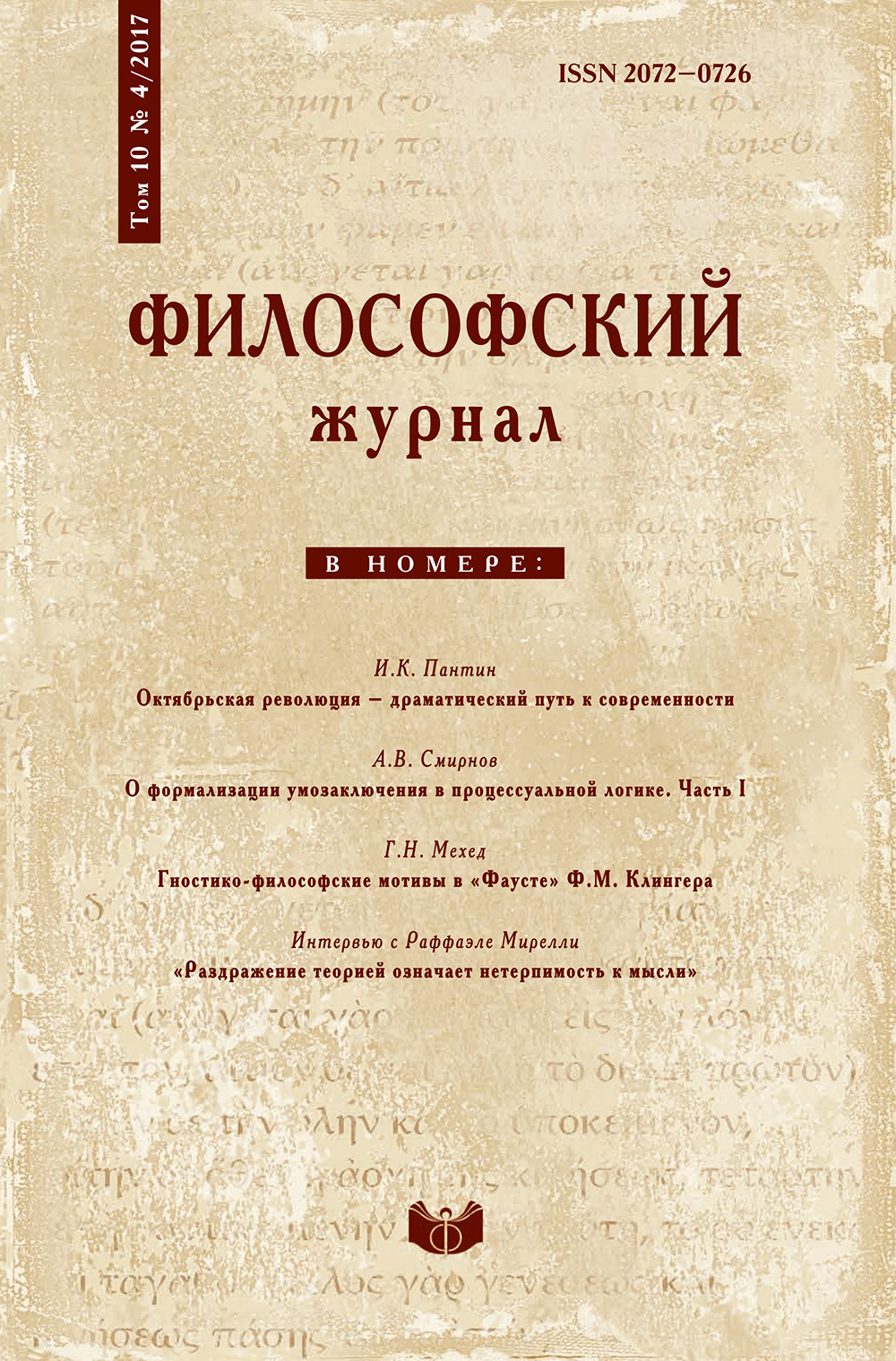Варбургианский антропологический проект в свете философии символических форм Э. Кассирера
DOI:
https://doi.org/10.21146/2072-0726-2017-10-4-156-170Ключевые слова:
варбургианский антропологический проект, теория образа, философия символических форм, субъект, символ, медицинаАннотация
В статье предпринимается попытка реконструировать проект немецкого историка культуры Аби Варбурга и его последователей в перспективе философской антропологии. В качестве основания для подобной постановки вопроса рассматривается группа историко-медицинских текстов последователей ученого. Рассмотренные в их содержательной связи с ключевой для варбургианского «Атласа» установкой на соответствие микрокосмоса и макрокосмоса, они позволяют показать, что проект центрируется вокруг антропологической проблематики, понимаемой не в узком смысле, как изучавшееся Варбургом поведение индейцев-пуэбло, но в широком – проблемы субъекта и его проявлений. Экспликация этой проблематики в рамках варбургианского проекта осуществляется с опорой на философию символических форм Э. Кассирера и заложенную в ней модель субъекта культуры. В свою очередь, для ее реконструкции и сопоставления с идеями Варбурга автор обращается к учению Кассирера о символическом понятии и лежащему в его основе принципу математической функции (релятивной структуры). Далее, основываясь на введенных Кассирером преобразованиях в сфере логики, автор рассматривает онтологию Кассирера, в частности проблему единства. В результате этого сопоставления выявляется, что основной общей характеристикой для варбургианского субъекта и субъекта Кассирера становится то, что он всегда задается через соответствующие опосредующие символические структуры: символическую форму и символический образ. Вследствие этого субъект всегда оказывается данным лишь в системе своих проекций, единство которых определяется функционально. Основное различие этих концепций определяется тем, что для Варбурга наиболее существенной составляющей образа является его аффективная природа, тогда как для Кассирера наиболее «чистой» формой символической активности является познание.






